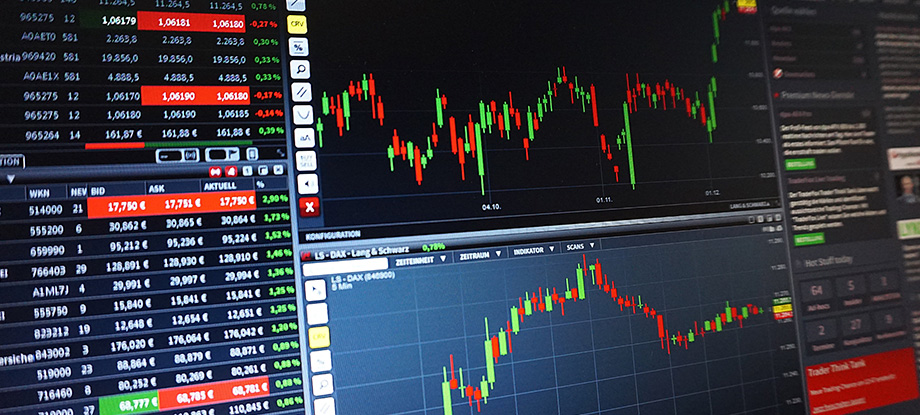During the mid 19th century, the discovery of new technology (using pipelines) that allowed kerosene to be commercially viable led to the beginning of an oil rush. But it was the period after the second World War that oil was recognised as a global commodity [1]. Since then, black gold has had a long and slippery history due to the sensitive relationship it had with supply and demand.
Throughout the years, there had been recessions, depressions and economic recoveries that saw average oil prices peaking to USD 145.30 in 2008 and a considerably stable oil price year average of USD 94.05 ~ USD 97.98 between the years 2011 and 2014 [1b].
One very influential group called the Organisation of Oil Exporting Countries (OPEC) was founded in Baghdad, Iraq with 5 other founding member countries: Iraq, Iran, Kuwait, Saudi Arabia and Venezuela. It was later joined by other oil exporting country members for a single purpose and that is to coordinate and unify petroleum policies to achieve fair and stable prices for producers of petroleum [2].
It was during the 1970s where OPEC rose to international prominence. The major portion of crude oil prices were governed by OPEC who continued to explore socio-economic development. By 1975, OPEC consisted of 13 member countries [3].
And now, let’s look at how (and why) oil prices were previously affected and what this means for the future of oil and gas. These are the top 5 events that triggered the biggest oil fluctuations in history [4][5].
1979 Iran-Iraq War & Iran Oil Embargo
Oil Price Year Average: $21.57

In 1976, the economy of the United States was only recovering after having an oil embargo imposed by OPEC. Following the unique economic event called stagnation, where high unemployment rates and rapid inflation was triggered, this prompted movement toward a more oil-independent US [6]. As the economy recovered, oil prices shot back up to the USD 100 – USD 125 range [7]. Succeeding these events, on the other side of the world, neighbouring countries Iran and Iraq had military conflicts that were prolonged into the 1980s due to Iraq looking to extend their control over the foreign policy of Iran’s bordering region of Khuzestan [8]. In seeking to control the Iraqi neighbour’s oil production, oil prices faced a whopping 73% drop; from USD 103 to USD 27 per barrel of oil (pbd) between the years 1981 to 1986 amidst the conflict [9]. The 8-year war left both countries devastated, and millions of civilians perished in what is known as the longest war in modern history. Today, both the country’s current leaders are trying to rebuild the remnants of war.
1990 Gulf War
Oil Price Year Average: $21.73
The Gulf War was triggered by Iraq’s invasion of Kuwait. Though the intentions behind the invasion is vague from economic warfare to a dispute over financial debts from the previous war (Iran-Iraq War), the invasion was enough reason for the United Nations and the United States to intervene in order to stabilise the global oil prices. The geopolitical move proved to be a success and led to the rise of oil prices [10].
1997 Asian Economic Crisis
Oil Price Year Average: $20.61
Much like the oil and gas industry, Asian finance typically sees a boom and bust scene. The environment has had a moderate inflation in several decades and enjoys robust growth and welcomes international investments.
But by the latter half in the 1980s, the growth came in with an abounding increment in stocks and property [11].
The crisis that loomed over the previous decade came as a huge shock in July 1997 when the Thai baht decided to float their currency. This means the Thailand monetary system was determined by global demand at the time [12].
Initially perceived as a localised financial crisis in Thailand soon spread towards neighboring Malaysia, Indonesia and even in the Philippines. Soon after, it spread further East toward South Korea and China. Across the continent, from Russia to the Americas, the international stock market experienced record lows [13]. The Asian Financial Crisis affected much of the world’s economy in 1997, stemming demand for oil in many Asian countries.
In fact, the closing price of today’s oil is only slightly higher (USD 17.67) compared to the average price during the said crises [14].
2001 – 2002 Recession and 9/11 – Afghanistan War
Oil Price Year Average: $21.99 ~ $23.71
Following the infamous September 11 attacks on the World Trade Centre, the stock market came crashing, followed closely by oil prices [15]. The attacks targeting the US highlights a fine connection between politics and oil. After the events of September 2001, demand for oil dropped to a 9 year low followed by a fall of 20% in oil prices compared to previous years [16].
2014 – 2015 The Great Recession
Oil Price Year Average: $41.85

One of the more recent economic meltdowns emblazoned into the minds of both white- and blue-collar employees is known as The Great Recession. While the crisis was more pronounced in its country of origin, in the United States, the lengthy period of economic downturn affected the whole world [17]. After the economic recovery in 2008, the demand for energy in emerging economies with significant populations like China and India allowed for the economic boom in the energy sector. Oil prices hiked up to the hundreds and floated between $100 ~ $125 before the crash in 2014 [18].
The same countries that enabled the increase in oil prices were also the cause for its decline when they had a much lower demand for it toward the end of the decade. Nations all over the world experienced similar boom and bust trajectories (including Brazil and Russia), contributing to the oil price crash.
When the inevitable occurred, oil producing nations like the US, Canada and Saudi Arabia struggled to keep oil prices afloat. The North American nations turned to fracking and extracting oil sands, both of which were still relatively expensive and highly damaging methods at the time [19][20]. The Middle East, on the other hand, turned to cost cutting measures as their oil field has always been more than enough to sustain their economy.
2020 US – Russian – OPEC disagreements, COVID-19 Pandemic
Oil Price Year Average: $20.08 ~ -$37

While there has been tension between multiple oil producing countries that do not involve OPEC country members, the biological being that threatened oil prices was unveiled to be a virus.
Due to the virus outbreak, multiple news sources have reported massive economic standstills locally and globally. The pandemic has brought traffic via air, water, rail and road as well as non-essential businesses to a temporary (possibly permanent) halt as millions of people in every corner of the globe are placed under quarantine in an effort to curb the spread.
The epidemic has killed more than 123,000 people since it first emerged in China in December 2019.
The IEA said measures taken by the OPEC+ group and other oil producing nations to cut output should allow demand to start exceeding supply again by the second half of 2020, assuming population lockdowns to curb virus spread are lifted [21][22].
The ongoing or new projects across the oil and gas value chain are likely to face numerous challenges in terms of project execution, planning and risk management aspect from the pandemic. Therefore, how the EPC industry is coping up with Covid-19 to stay afloat is something to pay attention. It is going to be very challenging for the industry to overcome this downturn in terms of managing the workforce and cost escalations in ongoing and new projects [23].
In a nutshell
In May 2020, during the pandemic and global lockdown, Brent crude price forecast dropped to USD 28 per barrel, a decrease of over 5%. US oil prices also went down to an 18-year low in tandem, to USD 19.20 per barrel [24]. Within the same month, prices dropped below the zero mark, bringing prices to the negative zone for the first time in the long and volatile history of petroleum.
According to chief executive to Princeton Energy Advisors, Steven Kopits likened black gold to the oxygen of the economy. Studying the previous oil trends, a spike in oil prices is certain, followed by an economic slowdown. He further pointed out the recession crises of the 1970s, early 1980s as well as the 1990s [25][26].
The only consistency observed in global oil prices would be the fluctuations in accordance with the economic state of major oil producing countries. Many economists have stated that with the coronavirus, the global impact is seeing a unique downturn of events. However, as history has seen time and again, the industry is a resilient one. While recovery is to be expected, it is only a matter of time until we see major changes.
We hope these short lessons in history have informed you a little about the commodity that runs our machines (and the economy).
Some of the services provided by SynergenOG include Process Safety, Technical Risk and Loss Prevention. Get in touch to enhance your facilities.
Sources
[1] www.bbc.co.uk/teach/how-did-oil-come-to-run-our-world/zn6gnrd
[2] www.macrotrends.net/2516/wti-crude-oil-prices-10-year-daily-chart
[3] www.ig.com/en/trading-opportunities/top-10-most-traded-commodities-180905
[4] enviroliteracy.org/energy/fossil-fuels/petroleum-history/
[5] www.opec.org/opec_web/en/about_us/24.htm
[6] www.britannica.com/list/5-of-the-worlds-most-devastating-financial-crises
[7] www.investopedia.com/terms/s/stagflation.asp
[8] www.britannica.com/event/Iran-Iraq-War
[9] www.marketwatch.com/story/heres-the-panic-level-for-oil-2019-09-17
[10] www.hazar.org/oil-as-a-weapon-from-the-iran-iraq-war-until-the-end-of-20th-century/
[11] www.myaccountingcourse.com/accounting-dictionary/floating-currency
[12] www.frbsf.org/economic-research/publications/economic-letter/1998/august/what-caused-east-asia-financial-crisis/
[13] www.pbs.org/wgbh/pages/frontline/shows/crash/etc/cron.html
[14] www.investopedia.com/financial-edge/0911/how-september-11-affected-the-u.s.-stock-market.aspx
[15] www.tandfonline.com/doi/abs/10.1080/09700160108459021?journalCode=rsan20
[16] www.investopedia.com/ask/answers/052715/how-did-financial-crisis-affect-oil-and-gas-sector.asp
[17] www.investopedia.com/ask/answers/052715/how-did-financial-crisis-affect-oil-and-gas-sector.asp
[18] www.bangkokpost.com/world/1900550/iea-predicts-worst-year-in-the-history-of-oil-sector
[19] oilprice.com/Energy/Oil-Prices/Oil-Prices-Drop-After-Touching-2019-High.html
[20] www.offshore-technology.com/comment/covid-19-impact-oil-gas-epc-projects/
[21] www.theguardian.com/business/2020/apr/15/oil-prices-slump-as-market-faces-lowest-demand-in-25-years-covid-19
[22] www.thebalance.com/oil-price-history-3306200
[23] www.theguardian.com/politics/live/2020/apr/15/uk-coronavirus-live-government-lockdown-exit-strategy-covid-19-latest-updates
[24] www.history.com/topics/21st-century/recession
[25] www.investopedia.com/ask/answers/030315/why-did-oil-prices-drop-so-much-2014.asp
[26] www.investopedia.com/terms/f/fracking.asp
[27] www.investopedia.com/terms/o/oilsand.asp
[28] www.ft.com/content/a5292644-958d-4065-92e8-ace55d766654

